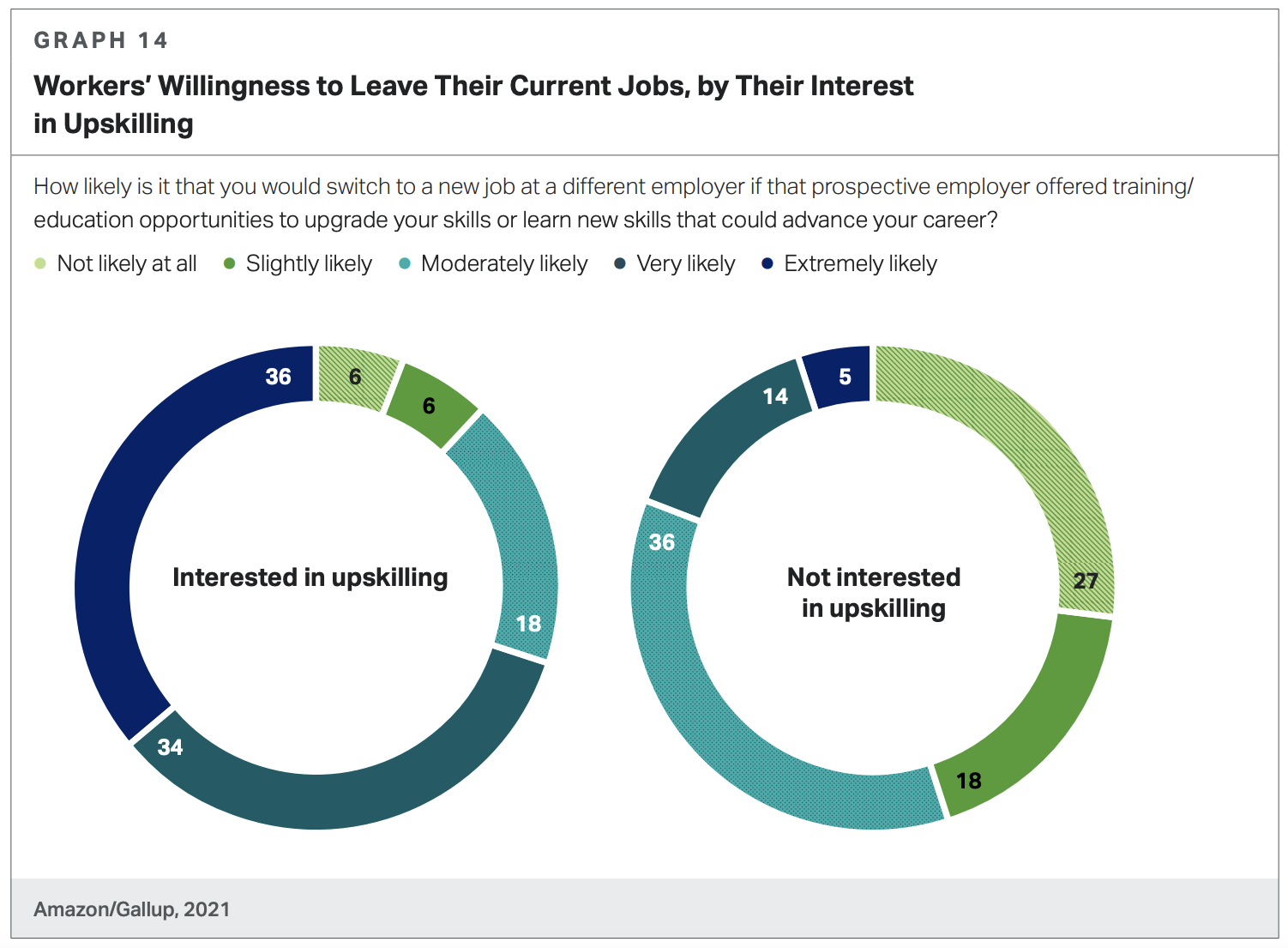Virtual assistant training is an essential but challenging undertaking when you’ve never done it before. Lucky for you, we’re here to guide you through the whole process.
Let’s dive right in:
Why it’s important to train your VAs
.jpeg)
It makes them better at their job
Your VA is already crazy talented to begin with, but when you offer them additional training, they’ll be even better at their job. They can take what they’ve learned, combine it with their existing knowledge, and become more effective with their daily tasks.
Plus, if you want to hand off bigger projects to your virtual assistant, walking them through the steps and sharing handy resources will help a lot. This way, they can gain the confidence to take on the job.
It builds and maintains trust
Training doesn’t stop after the onboarding process is through.
Employees appreciate companies that invest in training. It shows their potential is being recognized and that there’s room for career growth.
If you want your VA to know you’re serious about their development, let training be part of your company’s annual goals. Give your virtual assistant the chance to pick some courses they’d like to take and let them spend time absorbing the lessons.
This is a great way to gain their trust, and eventually, their loyalty.
It sets your company up for success
When you train your VA, you’re not only adding to their skill set. Your setting your business up for success.
Here are some of the ways virtual assistant training can help your business grow:
- You can entrust your VA with more complex tasks
- Your VA can use what they’ve learned to refine processes
- Your VA will stay with you longer, saving you the energy—and money—of finding a replacement
It frees up your schedule
Giving your virtual assistant the proper training will require blocking off a few days in your calendar, but it saves you loads of time in the long run. When they’ve been trained well, you won’t have to get updates from them every hour or redo all the work they’ve done.
This gives you more room to focus on parts of your business that you’ve been putting off—or go on vacation for a whole month without worrying about putting out fires.
How to train virtual assistants
.jpeg)
Figure out how much time to devote
First things first: how much time should you be allocating for the training?
The answer will depend on the virtual assistant skills you want your VA to hone, but the 30x rule can help you come up with a timeframe.
Popularized by author and motivational speaker Rory Vaden, this rule states that you should devote 30x the amount of time training an employee on a task than how long it would take you to complete it.
Here’s an example:
Think about how much time you spend, say, scheduling posts on Hootsuite, then multiply it by 30. If it takes you around 30 minutes, then you’ll need approximately 900 minutes or 15 hours to train someone else to do that.
While it’s doable to actually spend less time than that, the 30x rule is a good benchmark. You have to remember that your VA isn’t a pro at that task yet and may need a lot of support in the beginning.
Add context to the tasks
Showing how to do things is obviously a given in the virtual assistant training process, but what many business owners leave out is the why behind the tasks.
Don’t underestimate the importance of giving context. It sets the stage for what happens next. If your VA doesn’t know why they’re doing all that competitive analysis or typing out documents from scratch, they’ll see them as nothing but things to check off in their list of to-dos.
But when you show them the bigger picture—like how that competitive analysis will help the company develop better products—they’ll understand why they have to do it. They’ll feel a lot more empowered, too, knowing that they’re contributing to your business’ success.
Set clear goals, outcomes, and expectations
You’re not training for the sake of training. You should have a goal in mind, and it should be explicit to your VA from the start so that everyone stays on the same page.
Be realistic with your expectations. Even a virtual assistant with a decade of experience under their belt won’t be able to run on autopilot right away. Your company may have a different way of doing things, and it will take them some time to adjust.
Here’s what you need to do to nudge your virtual assistant on the right path:
- Establish SMART goals. Do you expect your virtual assistant to have a whole month of content scheduled on Instagram? Two 30-minute videos edited and ready for upload? Let them know from the get-go.
- Create a training track—it’s basically a calendar of the activities they’ll be doing (ex. taking an online course on Monday morning, doing an exercise on Tuesday afternoon, having a 1:1 every Friday).
- Set milestones, AKA the actions your VA should take to reach the goals you’ve outlined. Milestones break a goal down into bite-sized chunks and make it easier to track progress.
Prepare SOPs
Think of Standard Operating Procedures (SOPs) as blueprints that tell your team how to do certain tasks step by step. While these also come in handy for tenured team members who need a refresher, they’re especially helpful for newbies.
Besides the steps, you can also add some best practices that make the task simpler. For example, if your company uses Excel a lot, list down shortcuts and formulas your VA can use. If you’re always getting emails asking to exchange links, share templates for agreeing or disagreeing to the exchange.
What format should you use for your SOPs?
That’s up to you to decide. You can write your SOPs down on Google Docs and save them on your company’s shared drive. Or if you’re more of a “show not tell” kind of person, you can record walkthroughs on Loom.
Loom is particularly convenient since you can record a walkthrough once, just share the video with every new VA you hire, and save yourself the hassle of explaining the process again and again.
Whatever format you choose, make sure they’re accessible so that your VA can easily pull them up when they’re lost. This saves A LOT of time and questions.
Learn more about SOPs through our free course, The Delegation Leap.
Set deadlines

A good VA sees a deadline as a challenge they want to beat—not as something that’s there to pressure them. Specific deadlines help them stay on track with their tasks and put their time management skills to the test.
Set realistic deadlines, but allow some flexibility in case they ask for more time. If they request an extension, they may seriously need it.
Take advantage of online courses (both free and paid)
The beauty of the internet is that you can find anything you need to know by just hitting enter on Google—virtual assistant training courses included.
These courses are packed with useful information that can teach VAs anything from designing basic graphics using Canva to setting up automated emails. A lot of these courses are free, which is perfect when you’re still starting your team.
But once your team grows and you can spare a couple of bucks for the premium courses, do it. The value they deliver is worth every penny.
Here’s a list of websites that offer paid and free virtual assistant training courses:
Paid Virtual Assistant Training Courses
DigitalMarketer
A DigitalMarketer membership doesn’t come cheap, but if you want your virtual assistant to become a digital marketing pro, you should seriously consider investing in one. It has courses on topics like copywriting, paid traffic, and content marketing, and your VA will love that they can get certified. A membership also grants access to different marketing playbooks.
Skillshare
What’s great about Skillshare is that it has thousands of classes taught by experts. It’s also significantly cheaper than DigitalMarketer. The downside? It doesn’t offer certifications and the quality of the courses can vary. You’ll have to choose them carefully.
Udemy
There are different ways you can use Udemy. You can either pay for courses separately, subscribe to Udemy Business and have access to a curated selection of classes, or find free courses for your VA to take.
If you go the free route, just manage your expectations ahead. Udemy’s free courses tend to be limited and are really more like teasers.
LinkedIn Learning
Another platform that can help build virtual assistant skills is LinkedIn Learning. It has three categories—business, creative, and technology—and over 18,000 courses. The quality of the courses is pretty reliable, so it warrants the monthly or annual subscription you pay for.
Your virtual assistant will also appreciate the certificate they gain after they complete a course, which they can add to their LinkedIn profile.
Coursera
Way before the world started working from home, Stanford professors began Coursera in 2012. It has since partnered with other top schools like Duke, Princeton, and Columbia, so there’s no doubt you’ll find decent courses on this platform.
Many of the courses are even free. You’ll just need to pay for extras like a certificate of completion, but it’s not necessary (your VA will be happy, though).
Free Virtual Assistant Training Courses
Hubspot Academy
Don’t have the budget for paid courses? HubSpot Academy makes a neat alternative with its sales and inbound marketing courses. Each course is in-depth, and they also offer certification and downloadable resources.
The best part? You don’t have to pay a dime for any of it.
Google Digital Garage
Google Digital Garage has a variety of courses that are relevant to virtual assistant training, such as digital marketing fundamentals, understanding customer needs and behaviors, and business communication, to name a few.
And like Hubspot Academy, it’s absolutely free.
Evaluate the success of their training
How did your VA absorb all the information they’ve learned over the past weeks?
The following can help you answer that:
- Progress reports: These reports give you an idea of where your virtual assistant is at in the training process. They can show you how fast your VA is progressing or why they’re taking longer than expected. You can make progress reports part of the agenda for your weekly 1:1s.
- Their recommendations: If you required your VA to take an online course, ask them to share their recommendations after. This doesn’t only show you how well they understood the lessons. Their recommendations can also improve aspects of your operations.
- Their output: Did they set up the email campaign right? Were they able to fulfill orders without a hitch?
What’s the verdict—did your VA pass with flying colors? Or do they need a bit more practice? If there’s a pattern of employees still not grasping their tasks after the training, you might want to make tweaks to your training deck.
Give feedback
Many workers see feedback as something valuable. A study by PwC on millennials at work revealed that 51% of millennial employees believe feedback should be given regularly. They want to know how they’re doing, even if it means critical comments, because they care about their performance.
You may not feel comfortable dishing them out, but your VA can handle them. They’ll take your feedback and use it to do better—just be constructive when you share your comments. You can be kind without beating around the bush.
Of course, don’t forget to give credit where it’s due, even for small wins. As you can see in the pie chart below, recognition is the main driver of good performance.

Motivate your virtual assistant by recognizing their progress. If you noticed your writer improved tremendously after their second round of creating product description copy, tell them. If you like how detailed your Pinterest VA’s content calendar is, let them know.
Invest in continuous professional development

Like we said earlier, learning shouldn’t stop after the first weeks of onboarding. If you want your company to continue reaching new heights, then you have to ingrain it to your culture.
According to a study by Gallup, 48% of employees would consider moving jobs if it means more opportunities to upskill.
Your VA will be dangerously close to leaving if they feel stuck—like they haven’t been making progress and have just been going through the motions. They want to grow along with your company and upskill their, well, virtual assistant skills.
And it’s not a waste of time and resources to give them that opportunity.
Let’s say your company is heavily dependent on social media. Since the algorithm on platforms like Facebook and Instagram change so often, you’ll have a tough time growing your audience if you don’t keep up with the latest trends and updates. It’s the same thing with SEO and e-commerce platforms.
Giving your VAs time every quarter to pick an online course is worth it when it means your business isn’t following outdated practices and your employees are adding more to their skill set.
Tools that make training easier
Training someone from halfway across the globe would have been impossible in the past, but thanks to technology, it’s never been this simple. These tools, in particular, are lifesavers:
For 1:1s and other meetings
- Zoom
- Google Meet
- Skype
For SOPs
- Google Docs
- Notion
- Loom
For quick communication
- Slack
- Discord
For training briefs, updates, and deliverables
- Asana
- Basecamp
- Clickup
- Trello
Don’t take virtual assistant training for granted
Training your VA may take time, but all your effort will pay off.
Virtual assistants who know your SOPs like it’s their second language and continue to have new tricks up their sleeves are major assets to your business. With their help, you can propel your company forward without working overtime on essential but tedious tasks. Just delegate these responsibilities to them and your time will be yours again.
Don’t have any clue about delegating tasks to your virtual assistant? Take our Delegation Leap Course. It will help you learn how to delegate like a pro and it’s 100% free!
FAQs about virtual assistant training

.jpeg)












